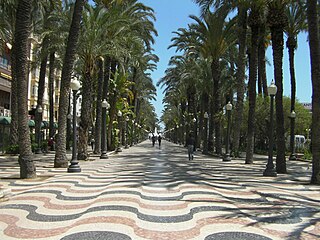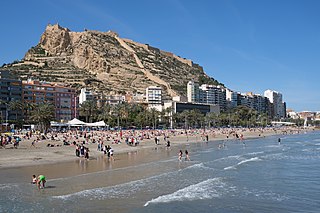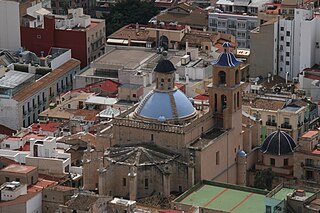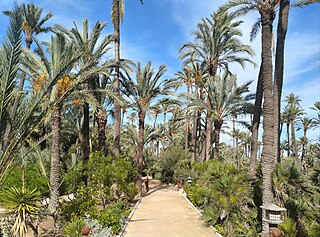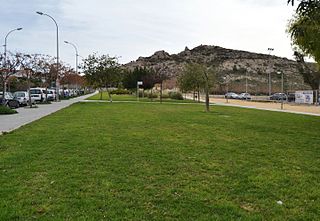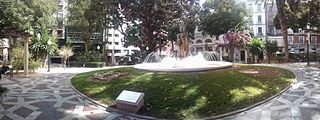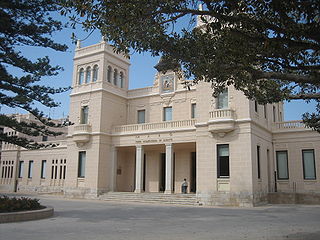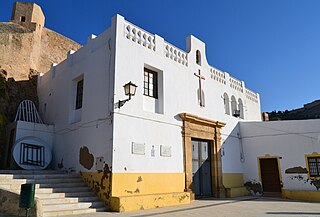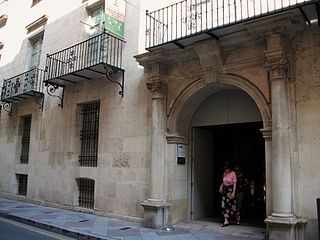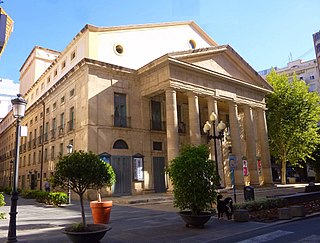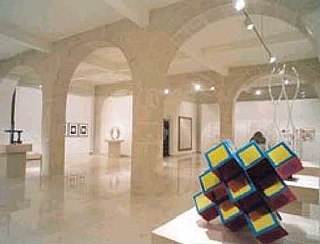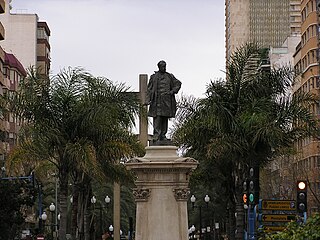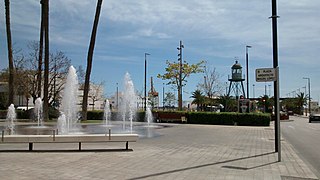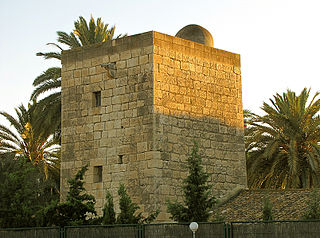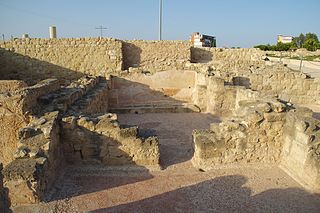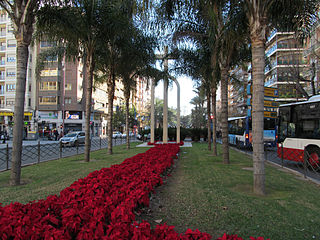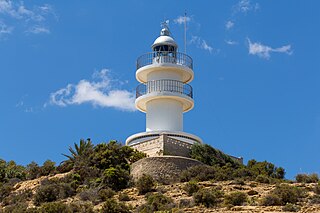20 Sights in Alicante, Spain (with Map and Images)
Legend
Premium Sights
Book tickets, guided tours and activities in Alicante.
Guided Free Walking Tours
Book free guided walking tours in Alicante.
Welcome to your journey through the most beautiful sights in Alicante, Spain! Whether you want to discover the city's historical treasures or experience its modern highlights, you'll find everything your heart desires here. Be inspired by our selection and plan your unforgettable adventure in Alicante. Dive into the diversity of this fascinating city and discover everything it has to offer.
Sightseeing Tours in AlicanteActivities in Alicante1. Explanada de España
The Explanada de España, also known as Paseo de la Explanada or simply La Explanada, is a promenade in the Spanish city of Alicante. It runs parallel to the port and the Paseo de los Mártires de la Libertad, from the Puerta del Mar to the Canalejas park, and is one of the most popular pedestrian streets in the city.
2. Castell de Santa Bàrbara
Santa Bárbara Castle is a fortification in the center of Alicante, Spain. It stands on Mount Benacantil bordering the sea, which gave it enormous strategic value since from it you can see the entire bay of Alicante and its land surroundings. The image of the mountain from the beach resembles a face, which is why it is called "the face of the Moor" and is an icon of the city of Alicante.
3. Plaça dels Estels / Plaza de los Luceros
The Plaza de los Luceros is the most emblematic of the Spanish city of Alicante. It is located at the confluence of four avenues, General Marvá to the north, Federico Soto to the south, Alfonso el Sabio to the east and Estación to the west. It has a monumental fountain built in 1930 by the Alicante sculptor Daniel Bañuls Martínez in the centre, which popularised the name, from that moment on, of Plaza de los Caballos.
4. Cocatedral de Sant Nicolau de Bari
The Co-Cathedral of St. Nicholas of Bari is a Catholic co-cathedral located in Alicante, in the Valencian Community of Spain. The church, part of the Diocese of Orihuela-Alicante is dedicated to Saint Nicholas and was elevated to the title of cathedral on 9 March 1959 by Pope John XXIII.
5. Parc el Palmeral / Parque el Palmeral
The Palmeral Park is located on Avenida de Elche in the Spanish city of Alicante, in the El Palmeral-Urbanova-Tabarca neighborhood, facing the Mediterranean Sea. It has its origin in an old palm grove with an orchard structure similar to the Palm Grove of Elche and the Palm Grove of Orihuela.
6. Monolito en recuerdo de las victimas del campo de concentración de Los Almendros
The Los Almendros Concentration Camp was a concentration camp for military and civilians at the end of the Spanish Civil War created by the rebel side two days before the last part of the war. It was located in the municipality of Alicante, Spain, about three kilometers from the urban center, in the area known as La Goteta, on the way to Vistahermosa, on one side of the Valencia road.
7. Plaça de Gabriel Miró / Plaza de Gabriel Miró
The Plaza de Gabriel Miró is a square located in the city of Alicante (Spain). It is also popularly known as Plaza de Correos, in memory of the main offices of the State Society of Posts and Telegraphs that were located in the square.
8. MARQ - Museo Arqueológico de Alicante
The Archaeological Museum of Alicante is an archaeological museum in Alicante, Spain. The museum won the European Museum of the Year Award in 2004, a few years after significant expansion and reallocation to renovated buildings of the antique hospital of San Juan de Dios. The museum houses eight galleries that use multimedia to allow visitors to interact with the lives of past residents of the region.
9. Ermita de Santa Cruz
The Hermitage of the Holy Cross is a temple in the city of Alicante. It is located in the neighborhood of Santa Cruz, on the slopes of Benacantil and close to the Castle of Santa Bárbara. It gives its name to the neighborhood.
10. Museo Bellas Artes Gravina
Gravina Museum of Fine Arts is a museum in the city of Alicante, Spain, located in the Palacio del Conde de Lumiares, a four floor building constructed between 1748 and 1808 and declared a historical monument.
11. Teatro Principal
The Teatro Principal is the most important theater building in Alicante, located in Plaza de Ruperto Chapí, s/n. In 1846, construction work began on what was then called the Teatre Nou in Plaça del Barranquet to differentiate it from the old theatre in Carrer de Liorna. The theater was inaugurated on September 25, 1847. Ten years later it was renamed Teatro de Alicante and, shortly after, Teatro Principal. The project was developed by the architect from Alicante Emili Jover Perrón.
12. MACA - Museo de Arte Contemporáneo de Alicante
Alicante Museum of Contemporary Art is a municipal museum in Alicante, Spain. It exhibits 20th-century and contemporary art. Created in 1976 thanks to Eusebio Sempere, and reopened in 2011 after a major renovation, the museum now consists of three permanent collections of about 800 art pieces. The museum is located in Asegurada building, the oldest civil building remaining in the city.
Wikipedia: Alicante Museum of Contemporary Art (EN), Website
13. Eleuterio Maisonnave
The monument to Eleuterio Maisonnave y Cutayar is located on Maisonnave Avenue, in Alicante, Spain. He represents Eleuterio Maisonnave, who was the first mayor of Alicante elected by universal suffrage (male), as well as Minister of the Interior during the First Spanish Republic and founder of the first savings bank in the city of Alicante.
14. Plaça de l'Arquitecte Miguel López / Plaza del Arquitecto Miguel López
Plaza Arquitecto Miguel López is a square in the Spanish city of Alicante. It is located in the Ensanche-Diputación neighbourhood, at the intersection of Elche, Loring and Óscar Esplá avenues, in front of the Casa Mediterráneo.
15. Torre de las Águilas
The Torre de les Aguiles is a defensive construction located in the municipality of Alicante that is north, in the direction of Sant Joan beach on the corner between Virgili and Horacio streets. It belongs to the set of defense towers of the Horta de Alicante.
16. Església de Sant Pere i Sant Pau
The Church of San Pedro and San Pablo is a Roman Catholic church located on the island of Tabarca, in the municipality of Alicante. In 1769 there was already a small chapel, which was enlarged into a church and was blessed in 1770, although its construction was not completed until 1779. It was declared an Asset of Cultural Interest in 1964 along with the rest of the island.
17. Lucentum
The Roman baths of Lucentum consist of two complexes: the baths of the wall, of a public nature, and the baths of Popilius, paid for by him and later donated to the city. From the baths of the wall, the suspensurae and the hypocausts can be seen.
18. Cruz de los Caídos
The Cross of the Fallen is a monument in the city of Alicante, Valencia, located in a traffic roundabout between the avenues of Doctor Gadea and Federico Soto, and tangent to the Plaza de Calvo Sotelo, in the place originally occupied by the monument in Maisonnave. Initially it was called the Monument to the Fallen for Spain and for the Fatherland.
19. Ciudad Ibero Romana de Lucentum
Lucentum is the name of an Iberian-Roman city located in the current municipality of Alicante, in the place known as El Tossal de Manises, in the neighborhood of Albufereta. The influence of the name of the ancient Roman city is echoed today in today's Alicante. A large multitude of companies, associations and sports clubs bear the name of the ancient city.
20. Far del Cap de l'Horta
The Cap de l'Horta street lamp is a lighthouse in the Valencian Country located in the Alicante coastal neighborhood of Cap de l'Horta. It is located at the end of the neighborhood adjacent to Platja de Sant Joan.
Share
Disclaimer Please be aware of your surroundings and do not enter private property. We are not liable for any damages that occur during the tours.
